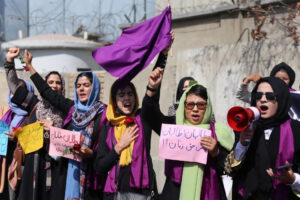Tucked into the mountains between Iran and a whole host of “-stans” (Pakistan, Turkmenistan, Uzbekistan, and Tajikistan), just one small country away from India and China, Afghanistan is not quite the Middle East, not quite Asia. Its cuisine has elements of each but is distinctively its own.
From India came chilis, saffron, garam masala and pepper. Persia contributed coriander and mint, while Mongolian influences take shape in dumplings and noodles. Fatty dishes are an important fuel in this nation of freezing winters, with oil used liberally and mutton fat traditionally added to many dishes. Afghans like their food neither too spicy nor too hot, with yogurt used as a dressing, topping or accompaniment.
Lamb and chicken are widely enjoyed, with the Afghan lamb kebab a very popular street food. Kormais type of stew with a base of fried onion and garlic, and can include meat, vegetables, chickpeas, tomato, fruit, yogurt and spices. Rice is a specialty and considered the best part of any meal. The treasured national dish called Kabuli (or Qabli) Pulao consists of slow-cooked meat in a dome of gently seasoned rice with lentils, raisins, carrots, ground cardamom and nuts. And of course bread (naan) is eaten with just about everything.
Not at all unusual, women do all of the cooking and food preparation for the entire family and their guests. Their daughters start at 12, helping their mother with the housework and taking part in the cooking. That way the tradition and the recipes pass from one generation to the next.
Dining Etiquette:
An important expression of food culture in Afghanistan is the “dastarkhan,” a spread of dishes arranged on a tablecloth that might be laid on the floor. You will be provided a cushion to sit cross-legged upon, (having removed your shoes at the door). Guests are usually given an individual bowl or plate, but utensils are not used; meals are eaten with the right hand, using bread as a scoop.
Tea defines hospitality in Afghanistan. Excellent tea is served after a meal along with dessert, which is likely Baklava, or Gosh-e-feel (fried pastry in the shape of an elephant’s ear!).
No matter how hard-pressed, the Afghans treat their guests with immense respect and will go to great lengths to serve them the best food possible. If you are a guest at an Afghani person’s home, you would be expected to enjoy huge quantities of everything. For this reason make sure to leave some food on your plate, otherwise it will soon be filled up again!
Source: Together Women Rise









